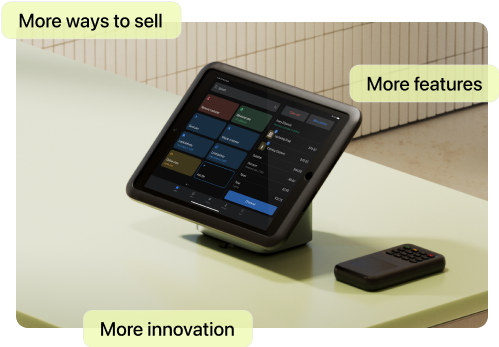Businesses often invest a lot of time and effort into their social media activities, and the results can be significant. Marketers cite increased exposure, traffic, and lead generation as among the top benefits of social media marketing, according to Statista.
But how do you know you aren’t posting into the void? How do you know your social media content is having an effect?
Reach and impressions are two key social media metrics that help businesses understand the impact of their social media presence. Both terms relate to how many users see an ad or a piece of content, and marketers often discuss them together.
A thorough understanding of reach and impressions and how they work together can help you launch a successful social media marketing strategy.
What is reach?
Reach is a social media metric that refers to how many unique users see your content. When you track reach, you count each viewer only once, regardless of how many times they viewed that piece of content. Reach shows you the size of your audience, or how many people have been exposed to your brand. The higher your reach, the greater your chances of interacting with your target audience.
While having a strong following can support your reach, the metric isn’t strictly tied to your number of followers since social media algorithms can dictate where your posts appear. In other words, one of your followers might not see a post, but the platform might display your post for a user who has never heard of your brand before. This might be due to an algorithmic suggestion or because one of your followers shared your post with their own network.
For example, let’s say your crochet business posts a photo of your colorful crochet coaster set on Instagram. The post is seen by 100,000 people, either in their feeds, through hashtag searches (#Crochet4Life), on the Instagram Explore page, or because it was tagged or shared by someone else. The reach for that post is 100,000.
What are impressions?
Impressions refer to the total number of times your post appeared on users’ screens. While reach measures how many unique users saw your content, impressions measure all views, including multiple views by the same user. As such, the number of impressions for a post or ad will always be equal to or higher than the reach for that post or ad.
Returning to the online crochet store example, impressions equal the total number of times people viewed your crochet coaster set photo. Some of those 100,000 people mentioned above saw your photo twice when scrolling through their feeds at different times of the day. Others saw it in their feed and then again when they visited your business’s profile, while some simply viewed it multiple times because it’s such a cute photo. In total, your Instagram post received 125,000 impressions.
Social media impressions can help you understand the level of brand awareness among your target audience. The person who viewed your image multiple times may have been considering whether or not to buy the coaster set. Or they may have simply been inspired to use those colors in their own project. Regardless of intention, each view counts as an impression.
Why reach and impressions are complementary metrics
Because reach and impressions measure different aspects of how users view your content, it’s best if you consider them together. A high reach can tell you the size of your audience, but not whether or not your audience is noticing your content. Similarly, a high number of impressions could be spread over a large audience or concentrated among a small number of dedicated fans.
The picture created by these two well-tracked social media metrics—along with other data points you use to evaluate social media performance—helps you understand how effective your social media strategy is and where you may need to make some changes.
Reach and impressions by social media platform
Although social media channels generally define reach and impressions the same way, platforms measure them slightly differently due to their varying algorithms, content types, and user experiences and behaviors. Some social media platforms also measure reach and impressions differently for paid content like ads or promoted posts. Explore how each major platform tracks these metrics:
Facebook divides its metrics into paid and organic (or non-paid) categories. Paid reach is the number of unique users who saw a paid post from your page appear on their screen. Organic reach refers to the estimated number of people who saw any of your unpaid posts on their screens.
Facebook further divides organic reach into two categories: viral and nonviral. Viral organic reach is when users see your content because one of their friends liked your content, followed your Facebook page, or shared one of your posts. Nonviral organic reach is when users see your content because it appeared in their news feeds.
Facebook impressions refer to the total number of times your content—whether it was a paid ad or a non-paid post from your page—appeared on a person’s screen.
Because Meta owns both Instagram and Facebook, the two platforms’ definitions for reach and impressions are similar, although their terminology differs. On Instagram, you can track reach as “accounts reached,” which refers to the number of unique accounts that saw your post or story. Instagram measures this for both individual pieces of content and your overall account.
Instagram doesn’t use the term impressions, but the platform’s term “views” more or less refers to the same metric. This term reflects the number of times your content played or appeared. You can track your views for your profile page and individual pieces of content.
View your analytics through Instagram Insights, which is only available to business or creator accounts and includes other metrics, such as profile activity, accounts engaged, and more.
TikTok
TikTok analytics are available for both personal and business accounts. On TikTok, “reach” refers to the total number of people who saw a specific video. TikTok doesn’t use the term impressions for organic content; however, it does measure “views,” which equal the total number of watches for a specific video. If you’re tracking paid content in the Ads Manager, impressions equal the number of times the platform displayed your ads.
Pinterest analytics are available to users who set up a business account. While Pinterest doesn’t measure reach for accounts or individual pins, you can track your total audience, or the total number of people who have seen or engaged with your pins. Impressions track the number of times your pins or ads appeared on viewers’ screens.
X
Social media metrics are available to users with X Premium accounts. The X experience revolves around engaging and interacting with posts, so the impressions metric is the platform’s focus. X defines impressions as the number of times the platform served users your post, whether it was in that user’s feed, search results, or a profile page.
X does not track reach; however, it does track profile visits and new followers, which can help you better understand how your audience may be growing.
YouTube
YouTube analytics is available to all accounts that post content via the YouTube Studio Content Manager. On this video-focused platform, impressions are king, but the platform does track many different and detailed social media metrics. YouTube refers to reach as “unique viewers”—the estimated number of people who watched your content over a given period of time. Impressions track the number of times YouTube showed your video thumbnail to viewers.
Tips for maximizing reach and impressions
Maximizing your reach and impressions is an important part of optimizing your social media presence and growing your business. However, a social media marketing strategy is most effective with clear goals in place, and that doesn’t always mean growing your reach and impressions in tandem.
Maybe you want to grow your target audience after expanding your business, so you focus on improving your reach. Or perhaps you’re falling behind in a competitive market, so you decide to run brand awareness campaigns to elevate your impressions and boost brand recognition. In both cases, paid posts can significantly improve your numbers, but additional strategies can reinforce that growth.
To improve reach:
-
Use multiple social media platforms to reach different user bases and content preferences.
-
Partner with influencers who have ongoing relationships with broad, established audiences.
-
Create shareable content that your target audience will value and want to reshare with their networks.
-
Make strategic use of popular hashtags and audio.
To improve impressions:
-
Post often and consistently (consider creating a content calendar to help with this) to give your posts a better chance of being seen.
-
Prioritize high-quality, eye-catching, and engaging content to increase viewing times.
-
Promote and reshare evergreen content (updating as needed) to increase the total impressions on older posts.
-
Find ways to engage with your audience, like posting polls or starting a conversation in the comments, to encourage them to return to the post to see the results.
Reach vs. impressions FAQ
Which is better, reach or impressions?
Reach and impressions are different metrics serving different functions in a social media marketing strategy, although both measure content visibility. While reach measures the total number of people who saw your content, impressions represent the total number of times the platform displayed your content for users (including multiple views by the same person). Reach is better for understanding the size of your audience, whereas the impressions metric is better for understanding how aware people are of your brand.
Is Facebook reach the same as impressions?
No, reach and impressions are not the same on Facebook. Reach refers to the number of people who see any of your posts, and impressions refer to the total number of times the platform displays your content to users, including multiple views by the same user.
Is CPM for reach or impressions?
CPM is directly related to impressions. In CPM marketing, the acronym stands for “cost per mille” and refers to cost per thousand impressions. In other words, it is the cost an advertiser pays for displaying an ad to 1,000 viewers..







